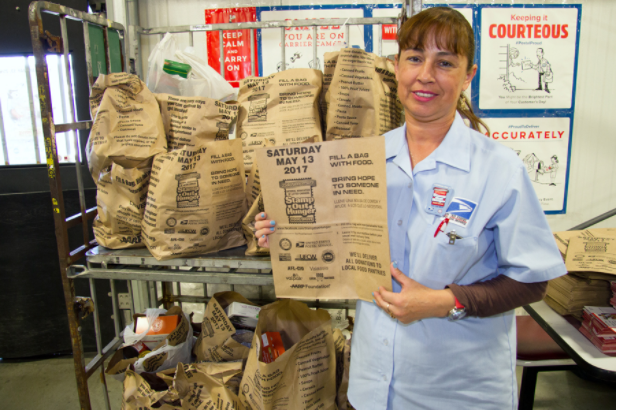America’s letter carriers joined thousands of volunteers on Saturday, May 13, to come to the rescue of millions of struggling families throughout the United States through the 25th annual Letter Carriers’ Stamp Out Hunger® Food Drive.
“At least six days a week, letter carriers see firsthand the needs of the communities they work in,” NALC President Fredric Rolando said, “and we’re privileged to be able to help those in need while leading an effort that brings out the best in so many Americans.”

This year’s silver-anniversary event brought in more than 71 million pounds of non-perishable food that was collected from generous postal patrons and delivered to community food banks, pantries and shelters, providing families in need with a lifeline of basic nutrition.
Asheboro, NC Branch 2560 letter carrier Wyatt Thompson noted in a letter to The Courier Tribune how carriers collected food donations in addition to delivering mail and packages on Food Drive Day. “Letter carriers witness daily the desperation of patrons who are suffering and they always respond,” he wrote. “It is definitely the most demanding day of the year for all carriers.”
Overall, NALC was able to provide critically needed goods to local food distribution centers in every state. The tally for this year’s drive, as of the June 2017 Postal Record’s deadline, was 71 million pounds of food collected in more than 10,000 cities and towns in all 50 states plus the District of Columbia, Puerto Rico, Guam and the U.S. Virgin Islands. This figure brought the quarter-century total to more than 1.5 billion pounds.
“As the mail trucks arrived at the post office filled with food items, the letter carriers expressed how they were happy to be involved in making a difference,” United Way of Greater Lima’s Carol Braden-Clarke told the Englewood [OH] Independent. “Letter carriers provide a valuable service in our community as the watchdogs of neighborhoods. They see every day where and when there may be a person in need.”
